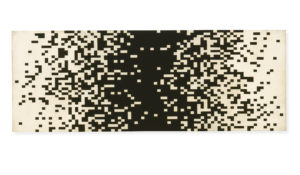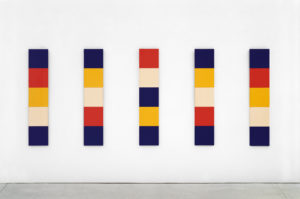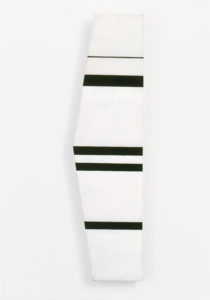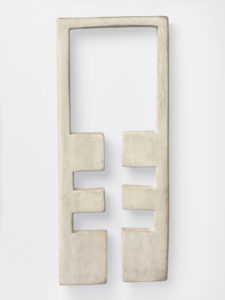Ellsworth Kelly: Paris/New York 1949-1959
Philadelphia Museum of Art
October 3, 2006 - April 8, 2009
Philadelphia 2006
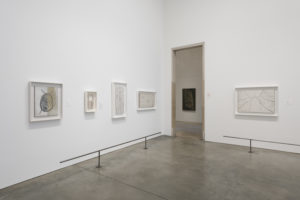
Ubu
EK A.21
Cutout in Wood
EK 12
Deesis I
EK 7
Romantic Landscape
EK 16
Seaweed
EK A.31
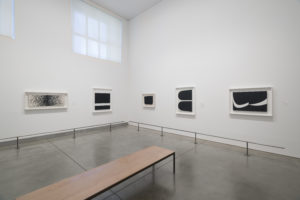
Seine
EK 45
White and Black
EK 82
Barge
EK 78
Black Curves
EK 67
Study for Atlantic
EK 98

Ubu
EK A.21
Cutout in Wood
EK 12
Deesis I
EK 7
Romantic Landscape
EK 16
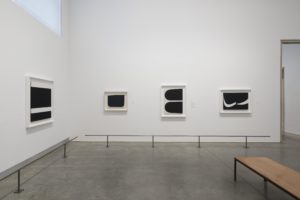
White and Black
EK 82
Barge
EK 78
Black Curves
EK 67
Study for Atlantic
Ek 98
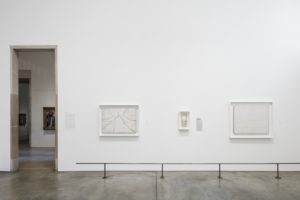
Seaweed
EK A.31
Cutout in Wood
EK 12
Window III
EK 2
In 1948, following his military service in World War II, the 25-year-old American artist Ellsworth Kelly moved to Paris, where he lived for six years before moving to New York in 1954. The paintings in this exhibition illustrate the significant changes in his work during this formative period, when the artist experimented with strategies that would prove to be instrumental to his artistic development. It was in Paris that Kelly abandoned figuration and easel painting, made his first shaped wood cutouts, embraced white monochrome and then primary colors, and developed the intensely felt abstraction for which he is known.
Although Kelly’s paintings and constructions do not appear at first glance to make any reference to reality, they are usually rooted in his close observation of the world—in this case in his response to the Paris streetscape and the building in which he lived. During his Paris years, Kelly began to employ chance in the composition of his works, and at the same time started to use the grid as an underlying structure. In the 1950s, Kelly made an important shift from small object-like works toward larger-scale paintings that command a wall. The titles of these later works often reflect the artist’s growing emphasis on the formal qualities of his compositions.
Kelly’s work resonates with earlier painting and sculpture in the Museum’s collection by artists he knew and admired. His playful use of the grid and black, white, and primary colors in his compositions recall those of Piet Mondrian, and his interest in chance connects to the work of Marcel Duchamp and Jean (Hans) Arp, as well as the American composer John Cage. While in Paris, Kelly visited Constantin Brancusi’s studio, among many others, and he was particularly drawn to the sculptor’s abstract interpretations of observed reality, which have clear connections with his own work. This Museum’s fine collection of Juan Gris paintings has particular importance for Kelly, who once saw a number of Gris’s small compositions hung close together in a manner that suggested the possibility that a single painting might consist of several separate panels.
The works in this exhibition trace Kelly’s remarkable artistic path in the early stages of his career and demonstrate why he is today considered one of the most eminent artists of our time.
– curated by Emily Hage, Andrew W. Mellon Curatorial Fellow of Modern and Contemporary Art, Philadelphia Museum of Art
